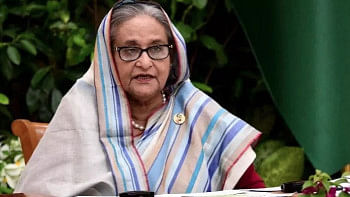The Indigo Trail

The beginning
The tropical climate, riverine lands and lush soils were the most suitable conditions for indigo plants to grow in this deltaic part of the world. In Bengal, indigo farming began as early as the 18th century during the British colonial rule. Owing to the Industrial Revolution in the west that kicked off around 1750, the demand for indigo suddenly skyrocketed (especially due to the major popularity of the Levi Strauss blue denim jeans then). At the same time, the British East India Company was determined to develop a regular means of remittance that would provide payment for imports and ensure growth of their wealth. Indigo, subsequently, became the obvious choice of cash crop and thus began the historical indigo farming in this region.
The Root of the Indigo Revolt (Neel Bidroho)
To meet the increased demand for indigo in Europe, indigo plantation was introduced in many areas including Burdwan, Bankura, Birbhum and Jessore. As indigo became a part of a lifestyle product in the west, it ironically turned into a crucial, and often cruel, livelihood product in this region.
The indigo planters' strategy was to convince the peasants to plant indigo instead of food crops by giving them a loan termed 'dadon.' This loan placed a humongous debt on their shoulders that they had to pay off throughout their entire lives, and sometimes even pass on to their successors. While meagre prices and zero profits were some evident setbacks of growing indigo, the government rules and zamindars also sided with the planters, thus aggravating the conditions of the farmers. In addition, indigo farming required multiple farmers, large plots of land and ploughing those plots with bullocks, all of which were beyond the affordability of the poor farmers. Living and working under such severe oppression, they henceforth resorted to revolt.
The Indigo Revolt or 'Neel Bidroho' began from the villages in Nadia district and spread across notable areas such as Pabna, Khulna and Narail. Planters and zamindars were the primary targets for the rebels but most of them managed to flee on time. Public trials, executions and even mass slaughter of the rebellious farmers were carried out by large police and military forces to ruthlessly suppress the movement. Among many, Biswanath Sardar, Biswas brothers of Nadia, Kader Molla of Pabna and Rafique Mondal of Malda were noteworthy rebel leaders.
Interestingly, the government's response was ambiguously quite lenient to the rebellion. As the first step, it formed an indigo commission to inquire into the problem of indigo cultivation. Finally, in November 1860, the government issued a notification that the 'raiyats' or peasants could not be compelled to grow indigo and that all disputes were settled by legal means. In the meantime, all indigo factories were already being shut down and its cultivation was virtually wiped out from Bengal by the end of 1860.
Despite the prominent differences in religion, class, beliefs and overall backgrounds, the unanimity, unity, organisation and discipline among the peasants remained impenetrable till the last dregs of the revolt. As a matter of fact, these were the key factors that led the Indigo Revolt to become a majorly successful agrarian movement in the history of Bengal and the Indian subcontinent.
Beyond the Hue –
Uses of Indigo
Indigo or Neel has a unique characteristic of dyeing the surface of the fabrics without staining the inner layer. This was one of the core reasons why it became increasingly popular post-industrialisation, in the wake of a transformative movement in western fashion. In the past few decades, essentially after the Revolt, the mass production of synthetic indigo took off and the usage of natural indigo dwindled over time.
Although still primarily used across nations for its dyeing properties, the indigo plant has remarkable medicinal and healing qualities too. For instance, drinking leaf extracts regularly can cure jaundice, fever and epilepsy, and relieve arthritis. Moreover, indigo leaf paste has also proven to be beneficial in healing wounds/bites caused by insects and/or animals.
Besides fashion and health, the indigo powder partakes in enhancing your beauty too. Combined with henna powder, it acts as an excellent colouring agent for your hair, giving it a black or dark brown colour while retaining its natural shine and strength.
Photo: Sazzad Ibne Sayed
Model: Meghla
Make-up: Farzana Shakil's
Makeover Salon
Styling: Sonia Yeasmin Isha
Wardrobe: LS Desk

 For all latest news, follow The Daily Star's Google News channel.
For all latest news, follow The Daily Star's Google News channel. 



Comments